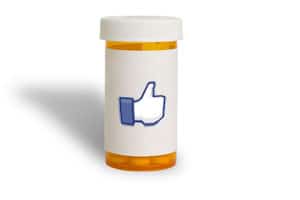 There may be plenty of reasons why social media might not be the right communications channel for pharma, but it seems the industry’s long-held fear of dealing with adverse events shouldn’t be one of them.
There may be plenty of reasons why social media might not be the right communications channel for pharma, but it seems the industry’s long-held fear of dealing with adverse events shouldn’t be one of them.
New research has found that less than half a per cent of social media mentions of pharma brands contain an actionable adverse event.
That was the conclusion of a study by monitoring and analytics firm Visible Intelligence, after it scoured sites like Facebook, YouTube and Twitter for mentions of more than 200 major pharma brands.
The company noted: “Our research indicates that pharmaceutical marketers that engage in diligent monitoring of social media for mentions of their brands should expect to see some mention of AEs within this discussion.
“However, the volume of AEs is not likely to exceed what can be handled through existing adverse event reporting channels established for traditional/offline reporting methods.”
The 30-day study monitored social media channels for mentions of 224 major pharma brands (153 prescription-only medicines and 71 over-the-counter products).
The prescription-only research arm focused on statins and anti-hypertensives, while the over-the-counter part of the project looked at antacids and decongestants.
They defined an adverse event as any “unfavourable and unintended sign”. This included abnormal laboratory findings, symptoms or disease associated with the use of a medical treatment or procedure, regardless of whether it is considered related to the medical treatment or procedure, that occurs during the course of the study.
The study collected data from a range of social media sites, including Facebook, Twitter, YouTube, Flickr, Reddit, blogs, forums, message boards, online communities, news sites and health sites.
The data was then cleaned, enriched and analysed using Visible Intelligence’s social media monitoring and analytics platform.
Pharma and monitoring online adverse events
But it’s not fair to say that pharma always shies away from the adverse event challenge.
Last August Roche released social media guidelines for its employees, explaining that if they see someone mention side-effects from taking one of the Swiss pharma company’s drugs they should they should immediately contact its global Drug Safety Team.
Meanwhile, UCB is looking to actively capture information on adverse events associated with its epilepsy products through its partnership with US-based online community PatientsLikeMe.
More recently the Association of the British Pharmaceutical Industry (ABPI) issued guidance notes on the management of adverse events and product complaints from pharmaceutical company sponsored websites.
Produced by the ABPI’s Pharmacovigilence Expert Network, the guidance notes cover managing adverse events from social media and the internet and suggest some best practices for the area.
• You can read Visible Technologies’ Adverse Event Reporting white paper in full here.




